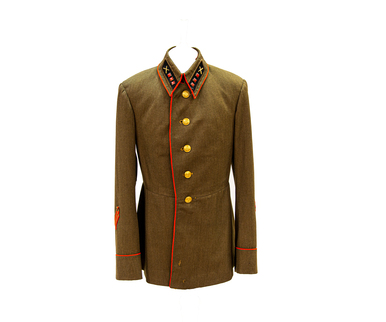Self-propelled artillery has many advantages over the towed artillery. It could continuously accompany the troops, provide them with fire protection, change positions quickly, approach the enemy and destroy his firing points. The self-propelled artillery became necessary when the Red Army managed to turn the tide of the war and was preparing to attack Hitler’s troops.
The self-propelled gun (SU-76) was jointly developed by Plant No. 38 design bureaus in Kirov.
An important contribution to the creation of self-propelled guns was made by the Soviet designer of armored weapons and equipment Semyon Ginzburg — he directed all stages of work.
The first SU-76's power units were bad. They consisted of paired automobile gasoline-powered engines GAZ-202 with a total capacity of 70 horsepower. During the tests, no problems were found, but they were detected during the battle on the Volkhov Front. It was difficult to synchronize the operation of two engines and gearboxes: the vehicle was very difficult to control on difficult sections of the road.
The completely enclosed fighting compartment proved to be inconvenient for the crew. All this led to the fact that after the release of 608 vehicles, the serial production of the SU-76 was suspended, and the design was sent for revision.
The modernized self-propelled artillery unit got the index SU-76M. The new model had two engines installed one after the other on the right side to avoid imbalance. At the same time, the gun barrel axis and the driver’s workplace were shifted to 20 cm left. The operation compartment was made open. There is still no consensus on the latest decision.
On the one hand, the opened operation compartment allowed to reduce the weight, to ease the calculations, to obtain better visibility, there were no accumulated powder gases and people could quickly exit from the burning unit. On the other hand, the crew could be destroyed by any frag grenade that got inside.
This problem was especially significant in urban battles.
For the first time, the self-propelled guns were used massively at the Kursk Bulge in the summer of 1943. At first they were mistakenly tried to be used instead of tanks and launched in front of the infantry in the breakthrough. This led to huge losses: the SU-76 had only bulletproof armor. Later, the tactics were adjusted by the commanders: self-propelled guns followed the tanks and infantry, supporting them with intense fire.
At the same time, weak armor made the design lighter. Due to the SU-76M lightness, it could successfully move through swampy terrain, where heavier vehicles got stuck. Due to its small size, the self-propelled gun could maneuver on narrow streets and among the rubble of buildings and destroy firing points where tanks could not pass.
It made the unit extremely popular at the front. The production of the SU-76M accounted for about 25 percent of the total production of combat tracked vehicles of the USSR in 1944. The Workers and Peasants Red Army received about 12 thousand self-propelled guns before the war was over.
The self-propelled gun (SU-76) was jointly developed by Plant No. 38 design bureaus in Kirov.
An important contribution to the creation of self-propelled guns was made by the Soviet designer of armored weapons and equipment Semyon Ginzburg — he directed all stages of work.
The first SU-76's power units were bad. They consisted of paired automobile gasoline-powered engines GAZ-202 with a total capacity of 70 horsepower. During the tests, no problems were found, but they were detected during the battle on the Volkhov Front. It was difficult to synchronize the operation of two engines and gearboxes: the vehicle was very difficult to control on difficult sections of the road.
The completely enclosed fighting compartment proved to be inconvenient for the crew. All this led to the fact that after the release of 608 vehicles, the serial production of the SU-76 was suspended, and the design was sent for revision.
The modernized self-propelled artillery unit got the index SU-76M. The new model had two engines installed one after the other on the right side to avoid imbalance. At the same time, the gun barrel axis and the driver’s workplace were shifted to 20 cm left. The operation compartment was made open. There is still no consensus on the latest decision.
On the one hand, the opened operation compartment allowed to reduce the weight, to ease the calculations, to obtain better visibility, there were no accumulated powder gases and people could quickly exit from the burning unit. On the other hand, the crew could be destroyed by any frag grenade that got inside.
This problem was especially significant in urban battles.
For the first time, the self-propelled guns were used massively at the Kursk Bulge in the summer of 1943. At first they were mistakenly tried to be used instead of tanks and launched in front of the infantry in the breakthrough. This led to huge losses: the SU-76 had only bulletproof armor. Later, the tactics were adjusted by the commanders: self-propelled guns followed the tanks and infantry, supporting them with intense fire.
At the same time, weak armor made the design lighter. Due to the SU-76M lightness, it could successfully move through swampy terrain, where heavier vehicles got stuck. Due to its small size, the self-propelled gun could maneuver on narrow streets and among the rubble of buildings and destroy firing points where tanks could not pass.
It made the unit extremely popular at the front. The production of the SU-76M accounted for about 25 percent of the total production of combat tracked vehicles of the USSR in 1944. The Workers and Peasants Red Army received about 12 thousand self-propelled guns before the war was over.



